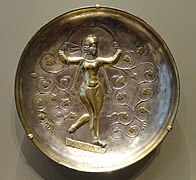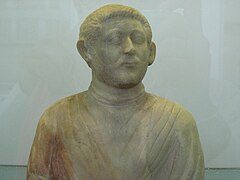Persians
The Persians (/ˈpɜːrʒənz/ PUR-zhənz or /ˈpɜːrʃənz/ PUR-shənz) are an Iranian ethnic group who comprise over half of the population of Iran.[4] They share a common cultural system and are native speakers of the Persian language[6][7][8] as well as of the languages that are closely related to Persian.[9]
For the breed of cat, see Persian cat. For other uses, see Persian (disambiguation).
The ancient Persians were originally an ancient Iranian people who had migrated to the region of Persis (corresponding to the modern-day Iranian province of Fars) by the 9th century BCE.[10][11] Together with their compatriot allies, they established and ruled some of the world's most powerful empires[12][11] that are well-recognized for their massive cultural, political, and social influence, which covered much of the territory and population of the ancient world.[13][14][15] Throughout history, the Persian people have contributed greatly to art and science.[16][17][18] Persian literature is one of the world's most prominent literary traditions.[19]
In contemporary terminology, people from Afghanistan, Tajikistan, and Uzbekistan who natively speak the Persian language are known as Tajiks, with the former two countries having their own dialects of Persian known as Dari and Tajiki, respectively; whereas those in the Caucasus (primarily in the present-day Republic of Azerbaijan and Dagestan, Russia), albeit heavily assimilated, are known as Tats.[20][21] Historically, however, the terms Tajik and Tat were used synonymously and interchangeably with Persian.[20] Many influential Persian figures hailed from outside of Iran's present-day borders—to the northeast in Afghanistan and Central Asia, and to a lesser extent within the Caucasus proper to the northwest.[22][23] In historical contexts, especially in English, "Persian" may be defined more loosely (often as a national identity) to cover all subjects of the ancient Persian polities, regardless of their ethnic background.



